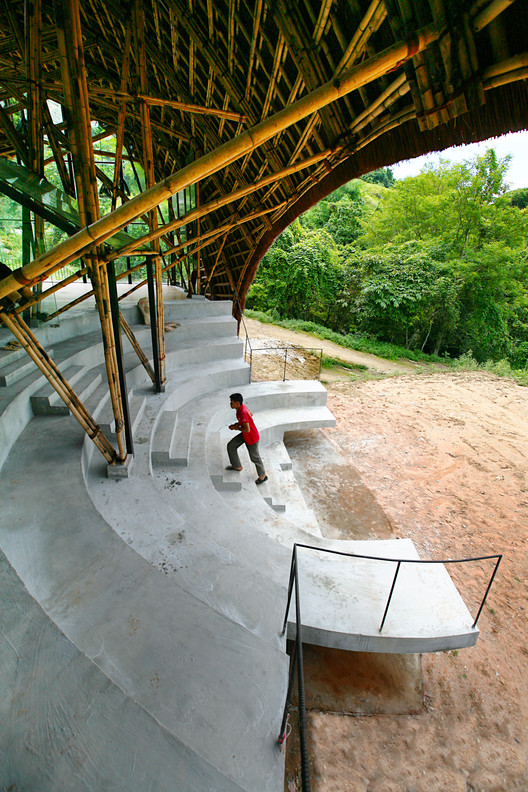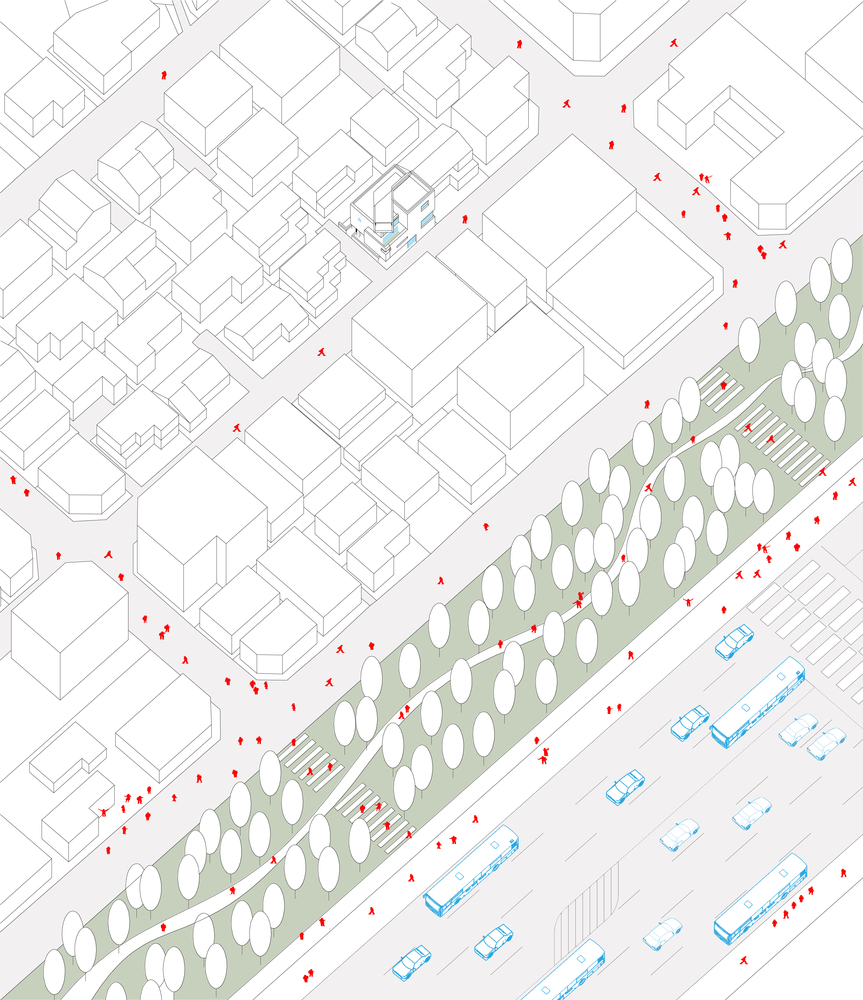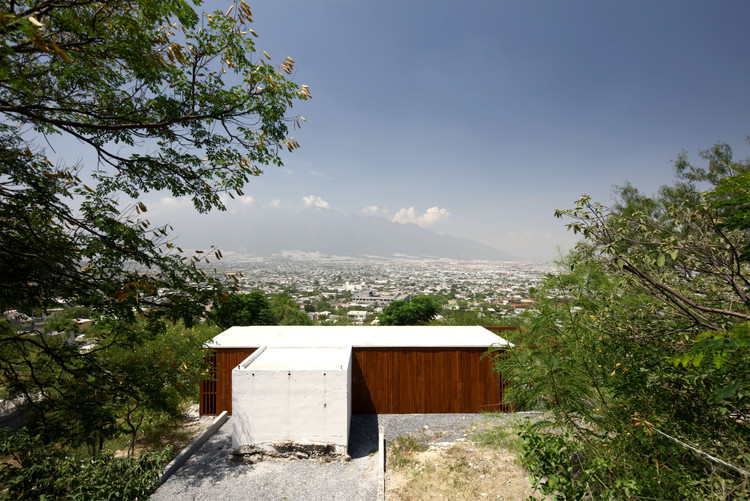Flashback B 018 Bernard Khoury Architects
2011-12-13 00:00
架构师提供的文本描述。B 018是一个由伯纳德·库里建筑师设计的音乐俱乐部,一个夜间生存的地方。在1998年的头几个月里,B 018号移动到了一个以其可怕的光环而闻名的地方-“检疫区”(Quantaine)。“隔离区”位于贝鲁特港附近。在法国的保护地,这是一个对到达的船员进行隔离的地方。在最近的战争中,它成为巴勒斯坦、库尔德和南黎巴嫩难民的住所(1975年为20 000人)。1976年1月,当地民兵发动了一次彻底摧毁该地区的激进袭击。贫民窟连同一公里长的边墙一起被拆除,这堵墙把这个地区与城市隔离开来。二十多年后,由于该地区稀少的城市结构与毗邻该地区的高速公路上人口稠密的社区之间的差距,战争的伤痕仍然清晰可见。
Text description provided by the architects. B 018 is a music club designed by Bernard Khoury Architects, a place of nocturnal survival. In the early months of 1998, the B 018 moved to the "Quarantaine", on a site that was better known for its macabre aura. The "Quarantaine" is located at the proximity of the port of Beirut. During the French protectorate, it was a place of quarantine for arriving crews. In the recent war it became the abode of Palestinian, Kurdish and South Lebanese refugees (20,000 in 1975). In January 1976, local militia men launched a radical attack that completely wiped out the area. The slums were demolished along with the kilometer long bordering wall that isolated the zone from the city. Over twenty years later, the scars of war are still perceptible through the disparity between the scarce urban fabric of the area and the densely populated neighborhoods located across the highway that borders the zone.
© Bernard Khoury Architects
首先,B 018项目是对其地理位置的历史所固有的困难和爆炸性条件的反应,以及在这样一个网站上实施娱乐节目所隐含的矛盾。
The B 018 project is, first of all, a reaction to difficult and explosive conditions that are inherent to the history of its location and the contradictions that are implied by the implementation of an entertainment program on such a site.
© Bernard Khoury Architects
B 018拒绝参加指导战后重建工作的天真健忘症,该项目建在地下。它的外观被压在地面上,以避免过度暴露的质量,可以作为一个修辞纪念碑。这座建筑镶嵌在一个略高于停机坪水平的圆形混凝土圆盘中。休息时,它几乎是看不见的。当它的铰接式屋顶结构在重金属中以液压方式收缩时,它就会在深夜出现生命。
B 018 refuses to participate to the naïve amnesia that governs the post-war reconstruction efforts. The project is built below ground. Its façade is pressed into the ground to avoid the over exposure of a mass that could act as a rhetorical monument. The building is embedded in a circular concrete disc slightly above tarmac level. At rest, it is almost invisible. It comes to life in the late hours of the night when its articulated roof structure constructed in heavy metal retracts hydraulically.
房顶的开放使俱乐部向世界展示了上面的世界,并向下面的赞助者展示了城市景观作为城市的背景。它的关闭意味着一种自愿的消失,一种休息的姿态。这座建筑被水泥和柏油路环包围。汽车围绕着俱乐部和同心圆的停车位环行,形成了旋转木马。
The opening of the roof exposes the club to the world above and reveals the cityscape as an urban backdrop to the patrons below. Its closing translates a voluntary disappearance, a gesture of recess. The building is encircled by concrete and tarmac rings. The automobiles' circular travel around the club and the concentric parking spots frame the building in a carousel formation.
© Bernard Khoury Architects
晚上,客队车辆的连续运动使停车场充满活力,并成为俱乐部场景中不可或缺的元素。入口位于低地金属结构的南端,在那里,楼梯通向两个凹的“气闸”空间,由皱眉的保镖把守。散落在地下大厅的混凝土路面地板上的沙发,带有可折叠的背,作为舞台表演的高架舞姿。
At night, the continuous motion of the visitors' cars animates the parking and becomes an integral element of the club's scenario. The entrance is located at the south end of the low-lying metal construction where a stair leads to two concessive "airlock" spaces manned by scowling bouncers. Strewn across the concrete pavement floor of the underground hall, the sofas with collapsible backs serve as elevated dancing surfaces that stage the performers.
 举报
举报
别默默的看了,快登录帮我评论一下吧!:)
注册
登录
更多评论
相关文章
-

描边风设计中,最容易犯的8种问题分析
2018年走过了四分之一,LOGO设计趋势也清晰了LOGO设计
-

描边风设计中,最容易犯的8种问题分析
2018年走过了四分之一,LOGO设计趋势也清晰了LOGO设计
-

描边风设计中,最容易犯的8种问题分析
2018年走过了四分之一,LOGO设计趋势也清晰了LOGO设计






































